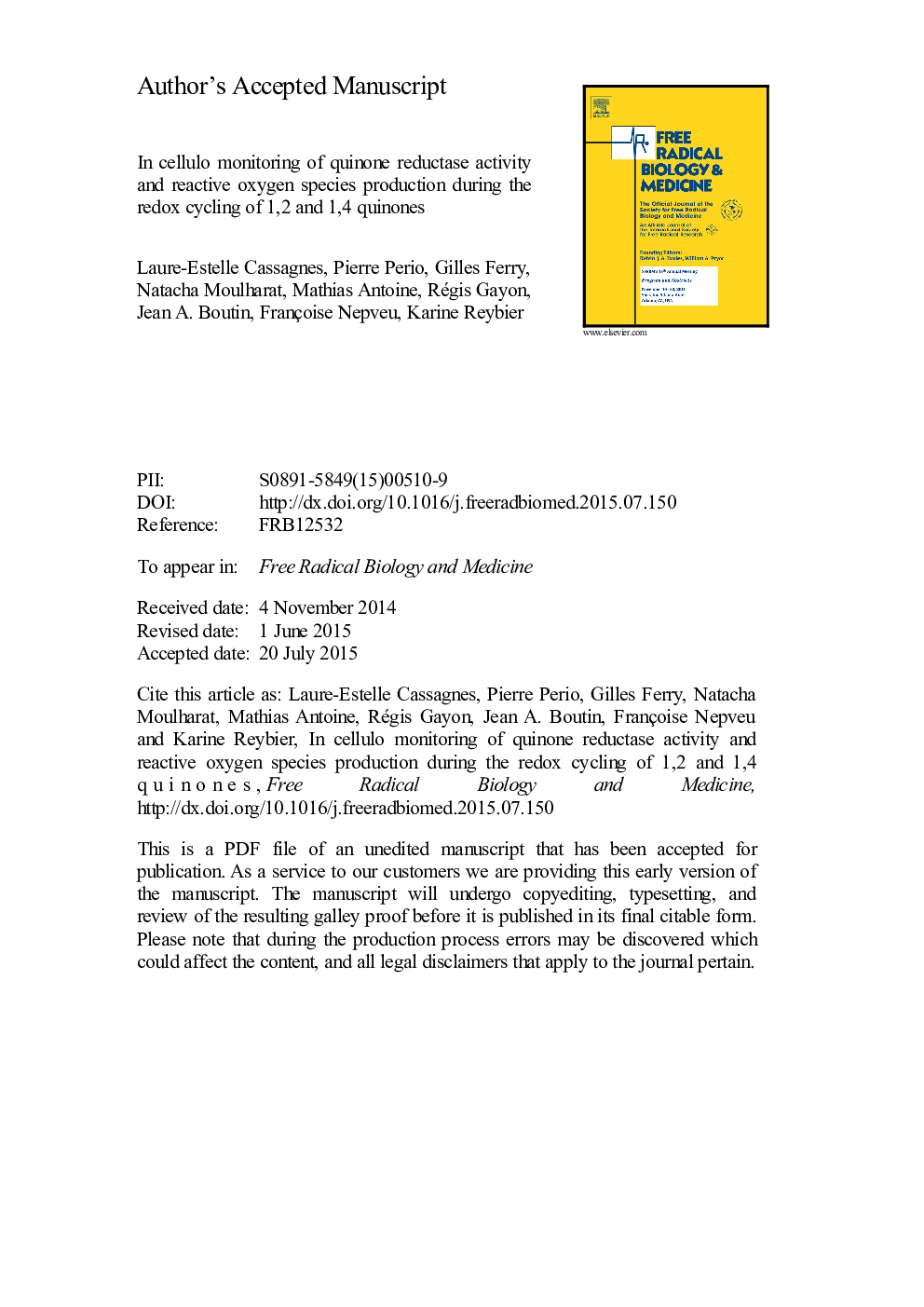| کد مقاله | کد نشریه | سال انتشار | مقاله انگلیسی | نسخه تمام متن |
|---|---|---|---|---|
| 8268413 | 1534954 | 2015 | 20 صفحه PDF | دانلود رایگان |
عنوان انگلیسی مقاله ISI
In cellulo monitoring of quinone reductase activity and reactive oxygen species production during the redox cycling of 1,2 and 1,4 quinones
ترجمه فارسی عنوان
در سلولو نظارت بر فعالیت های کینون ردکتاز و تولید گونه های اکسیژن واکنشی در طی دوچرخه سواری مجدد از 1،2 و 1،4 هینون
دانلود مقاله + سفارش ترجمه
دانلود مقاله ISI انگلیسی
رایگان برای ایرانیان
کلمات کلیدی
موضوعات مرتبط
علوم زیستی و بیوفناوری
بیوشیمی، ژنتیک و زیست شناسی مولکولی
سالمندی
چکیده انگلیسی
Quinones are highly reactive molecules that readily undergo either one- or two-electron reduction. One-electron reduction of quinones or their derivatives by enzymes such as cytochrome P450 reductase or other flavoproteins generates unstable semiquinones, which undergo redox cycling in the presence of molecular oxygen leading to the formation of highly reactive oxygen species. Quinone reductases 1 and 2 (QR1 and QR2) catalyze the two-electron reduction of quinones to form hydroquinones, which can be removed from the cell by conjugation of the hydroxyl with glucuronide or sulfate thus avoiding its autoxidation and the formation of free radicals and highly reactive oxygen species. This characteristic confers a detoxifying enzyme role to QR1 and QR2, even if this character is strongly linked to the excretion capacity of the cell. Using EPR spectroscopy and confocal microscopy we demonstrated that the amount of reactive oxygen species (ROS) produced by Chinese hamster ovary (CHO) cells overexpressing QR1 or QR2 compared to naive CHO cells was determined by the quinone structural type. Indeed, whereas the amount of ROS produced in the cell was strongly decreased with para-quinones such as menadione in the presence of quinone reductase 1 or 2, a strong increase in ROS was recorded with ortho-quinones such as adrenochrome, aminochrome, dopachrome, or 3,5-di-tert-butyl-o-benzoquinone in cells overexpressing QR, especially QR2. These differences could originate from the excretion process, which is different for para- and ortho-quinones. These results are of particular interest in the case of dopamine considering the association of QR2 with various neurological disorders such as Parkinson disease.
ناشر
Database: Elsevier - ScienceDirect (ساینس دایرکت)
Journal: Free Radical Biology and Medicine - Volume 89, December 2015, Pages 126-134
Journal: Free Radical Biology and Medicine - Volume 89, December 2015, Pages 126-134
نویسندگان
Laure-Estelle Cassagnes, Pierre Perio, Gilles Ferry, Natacha Moulharat, Mathias Antoine, Régis Gayon, Jean A. Boutin, Françoise Nepveu, Karine Reybier,
